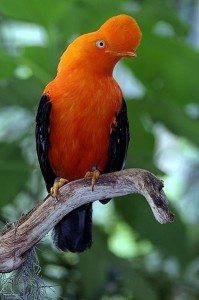Many people who choose to learn Spanish in Peru do so because they are excited about the region’s biodiversity. The country has amazing resources including the Andes mountains, the Amazon Rainforest and, of course, the Pacific Ocean.
Luckily, the government protects many of the country’s unique ecosystems. There are eight national parks and eight national reservations in Peru, in addition to a variety of national sanctuaries, national forests, and reserved zones. These areas protect Peru’s 1800 bird species, 500 mammal species, and 300 reptile species, including some endangered species such as the spectacled bear and the wooly monkey.
Peru is particularly renowned for its large bird population–the second largest of any country in the world. In fact, over the last 30 years, 42 new species of birds have been discovered. Reptiles and amphibians are also plentiful in Peru, including anacondas, caimans, monkey frogs and tree frogs.
So where should you head to see all of this wildlife in between your Spanish classes in Peru? One popular destination is the Bahuaja- Sonene National Park in southeastern Peru. This beautiful park is surrounded by rivers and contains tropical forests and tropical foothills as well as dwarf forests. There are about 20,000 plant species and 600 bird species to see here.
Another recommended destination is Colca Canyon, also in southern Peru. Colca Canyon is only about 100 miles from Arequipa, the second most populated city in Peru, so it is heavily touristed and easy to reach. Amazingly, Colca Canyon is about twice as deep as the Grand Canyon! You will also find that fascinating people live in the Colca Valley as the towns were founded in the times of Spanish colonials. A great many ancestral traditions remain.
If you decide to learn Spanish in Peru, you will find that spending time in this country offers many benefits outside of just learning the language. Be sure to bring along a good camera, as the wildlife in the region will provide you with beautiful photographs to show to your friends and family when you return home.
